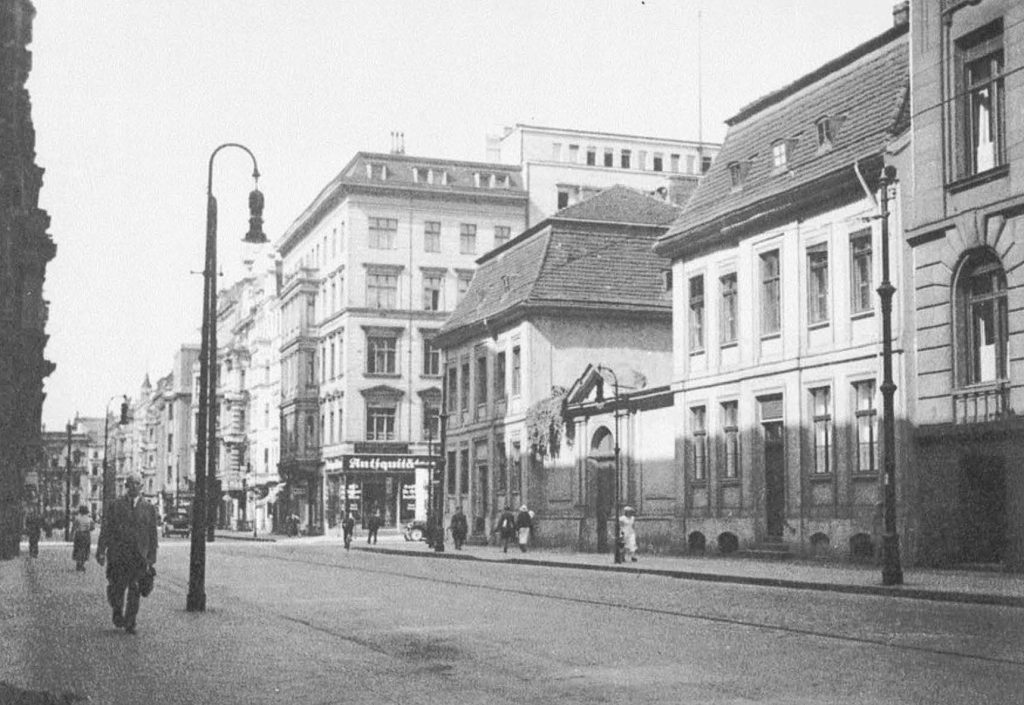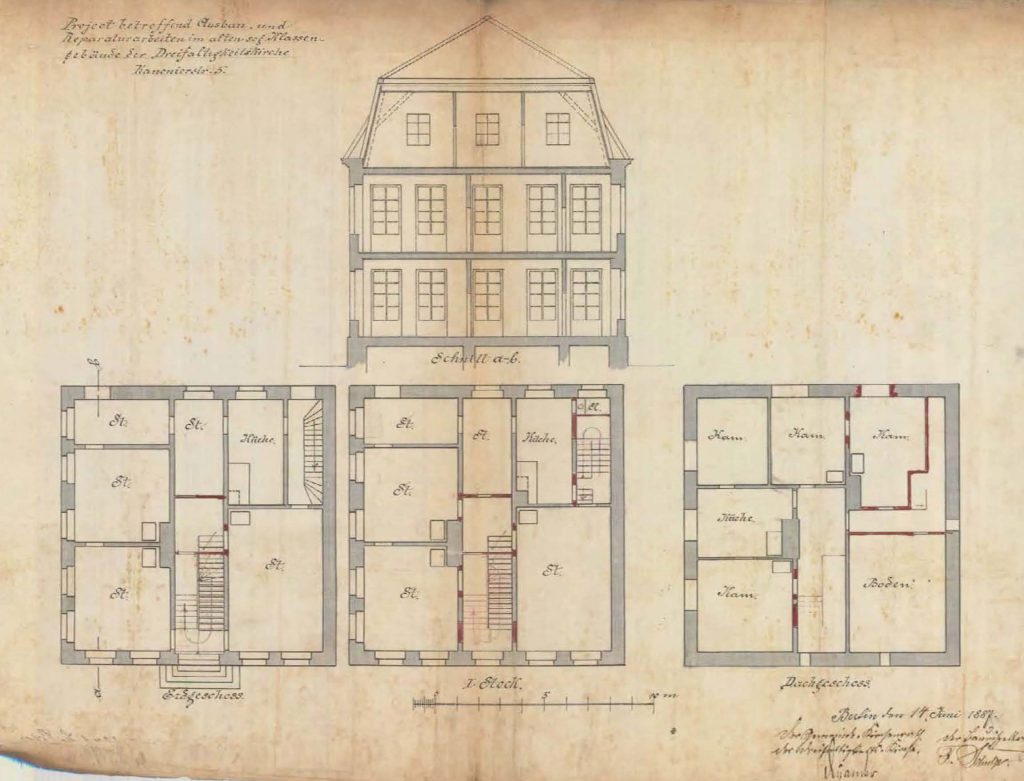Historical context
The Neue Schleiermacherhaus project is at the junction of Glinkastraße and Taubenstraße in central Berlin
The Neue Schleiermacherhaus project is at the junction of Glinkastraße and Taubenstraße in central Berlin
Approaching from the Gendarmenmarkt along Taubenstraße, the baroque houses of the Schleiermacherhaus shine with their ochre-coloured facades. They seem like a foreign body in the middle of grey government buildings. They are the last surviving witnesses of historical architecture in the Friedrichstadt founded by Friedrich I after his name.


Originally the three buildings were associated with the Dreifaltigkeitskirche, designed by Titus de Favre and Christian August Naumann. This church was destroyed during Second World War. Its location is now commemorated by marked by coloured pavement stones outside the North Korean Embassy on Glinkastraße 5-7. One of the more famous preachers of the Church was Friedrich Schleiermacher, who from 1809 until his death in 1834 preached in the prestigious church to a large congregation. From 1809 to 1816, Schleiermacher resided in the vicarage and held weekly salons within its walls, inviting theological, philosophical, and political discussions – a tradition maintained to this day. This historic ensemble was named after him as the Schleiermacherhaus.
